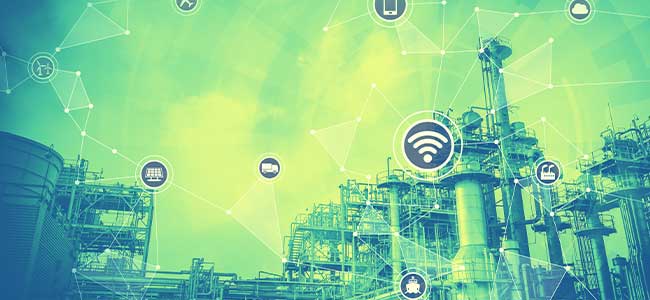
Elevating Real-Time Gas Detection
24/7 live monitoring elevates safety programs in a number of ways.
- By Cynthia Horn
- Jun 01, 2023
Across any plant operation, industrial hygienists and safety managers play a huge role in making sure everyone goes home every day. They’re constantly keeping their finger on the pulse of operations, so the idea of “real-time detection” isn’t new.
However, the term “real-time detection” has morphed significantly over the years. Once, safety professionals relied on flame safety lamps. Later, in the 1980s, it became synonymous with electronic monitoring equipment. Today, the introduction of devices supported by the Industrial Internet of Things (IIoT) and robust live monitoring software solutions is what most professionals rely on.
With today’s live monitoring technology, safety professionals can gain the insights they need to act fast in emergency situations. But what else can live monitoring do to elevate safety programs?
Real-Time Gas Readings and Alerts for Everyone
Real-time detection today relies heavily on IIoT technology and bespoke software solutions. These developments have made it so users can easily share alarms and gas readings between workers and safety managers in real time, making it easier to respond to gas hazards, panic alarms or man-down alarms quickly.
To elevate safety programs, managers can even receive this information directly on their own gas detector or use remote live monitoring options to see readings instantly on a phone or laptop through real-time alerts, emails or text messages.
With 24/7 live monitoring options, safety managers and industrial hygienists can also see where and when personnel are consistently facing hazardous exposure levels so they can drive proactive safety improvements to prevent accidents or injuries.
Live monitoring software, for example, can mark the location where workers are constantly experiencing exposures by connecting to pre-placed beacons. This information is then sent to the cloud in real time to indicate any hazards, which can then be communicated to stakeholders via email or text.
With peer-to-peer, satellite, Wi-Fi and cellular alert options, users can also create more robust safety programs by enabling team members to look deeper into what’s happening around their site with alarm reports highlighting who had which gas monitor, if they were exposed to any hazards, where the exposure came from and more. This can help to further increase situational awareness and decrease emergency response times by ensuring your gas monitors always have a reliable connection.
It also eliminates the need for manual check-ins with lone workers thanks to automatic status updates. With these automatic status updates, workers can focus on the job at hand, improving their safety and productivity—and safety personnel can rest assured that no alert will go unnoticed.
While deep insights are important for your safety program, the ability to access real-time data, such as gas readings or emergency alerts, from anywhere with emails and texts is key in ensuring you aren’t leaving workers high and dry.
Tracking Alerts 24/7, Even When You’re Off the Clock
Real-time alerts and notifications are great when they can be acted on instantly; but what happens if a safety professional is in a meeting or dead cell zone? What about when safety teams are off the clock and enjoying their free time, but there are still workers who operate around the clock? What happens to employees in different time zones?
Some companies aren’t equipped with staff that can guarantee reliable monitoring and response times if something happens to their around-the-clock workers. However, by adding a 24/7 professional monitoring service, in addition to IIoT-backed equipment and other live monitoring solutions, industrial hygienists and safety managers can easily fill this gap.
A service like 24/7 professional monitoring can vary wildly based on a facility’s needs, so how does it work? In general, once the service is connected to an IIoT-backed device, any alerts will be sent to both on-site safety managers as well as the professional monitoring service, which will respond according to a user’s established escalation plan.
Formulating an Escalation Plan
When creating an escalation plan, it should be determined by the facility’s safety managers and industrial hygienists to ensure that every alert is addressed exactly how they want—including plans based on who the user is, which type of alarm has gone off and more.
For example, it could be established that if there is a man-down alarm or a panic alarm, the professional monitoring service will call the user’s cell phone. If there’s no response, then they will call 911 and provide the user’s last known location. In other instances, the established escalation plan could look like calling the user’s phone and if there’s no response, calling the team lead, supervisor, etc. until the situation is appropriately handled.
Those satisfied with their current state of real-time gas detection have been skeptical and have shied away from live monitoring, citing concerns about the reliability of wireless gas detectors and other equipment in safety applications. In their minds, equipment used in safety applications must be 100 percent reliable, 100 percent of the time. It’s a classic example of letting perfect get in the way of great—and it puts workers at unnecessary risk.
In the end, no system, no equipment and no user can offer that perfect level of assurance, but implementing a professional monitoring service, in addition to live monitoring solutions, can help ensure everyone stays safe on the job—no matter the time of day.
This article originally appeared in the June 1, 2023 issue of Occupational Health & Safety.